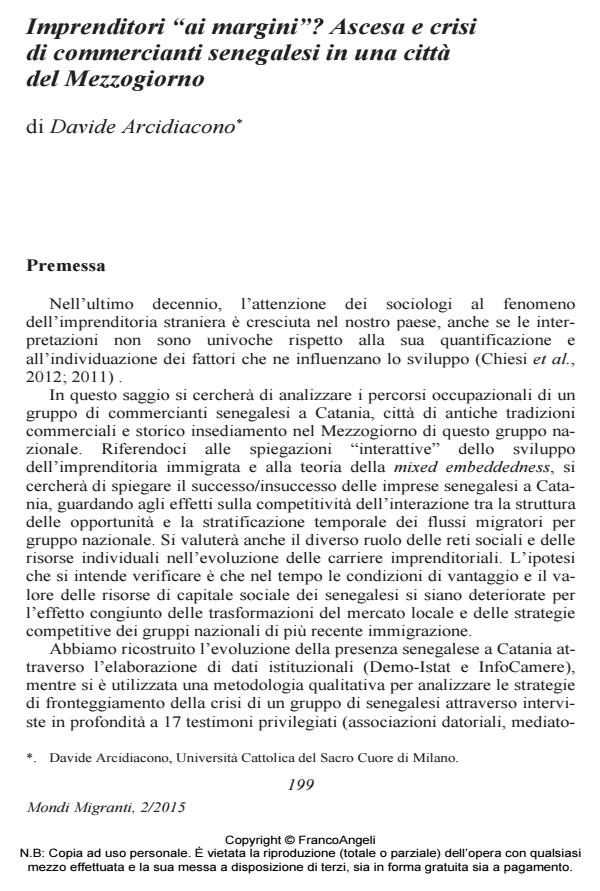Entrepreneurs "on the edge"? Rise and crisis of Senegalese traders in a city of the South Italy
Journal title MONDI MIGRANTI
Author/s Davide Arcidiacono
Publishing Year 2015 Issue 2015/2
Language Italian Pages 22 P. 199-220 File size 104 KB
DOI 10.3280/MM2015-002008
DOI is like a bar code for intellectual property: to have more infomation
click here
Below, you can see the article first page
If you want to buy this article in PDF format, you can do it, following the instructions to buy download credits

FrancoAngeli is member of Publishers International Linking Association, Inc (PILA), a not-for-profit association which run the CrossRef service enabling links to and from online scholarly content.
The author analyzes the career paths of a group of Senegalese traders in Catania, referring to the "interactive" explanations and the theory of mixed embeddedness, looking at the interaction between the structure of opportunities and the effects of stratification of migration flows on competitiveness of their firms, considering also the different role of social networks and individual resources in the evolution of entrepreneurial experiences. The case study highlights the reversibility of the conditions of advantage/disadvantage for foreign entrepreneurship in the local markets, the falling demand and fierce competition from Chinese and Bengali, the dearth of resources, economic and relational, above all outside your home community, the generational conflict between pioneers and newcomers, as key factors of the decline of these activities during the recent economic crisis.
Keywords: Entrepreneurship, senegalese, economic crisis, trade, ethnic, selfemployment
Davide Arcidiacono, Imprenditori "ai margini"? Ascesa e crisi di commercianti senegalesi in una città del Mezzogiorno in "MONDI MIGRANTI" 2/2015, pp 199-220, DOI: 10.3280/MM2015-002008